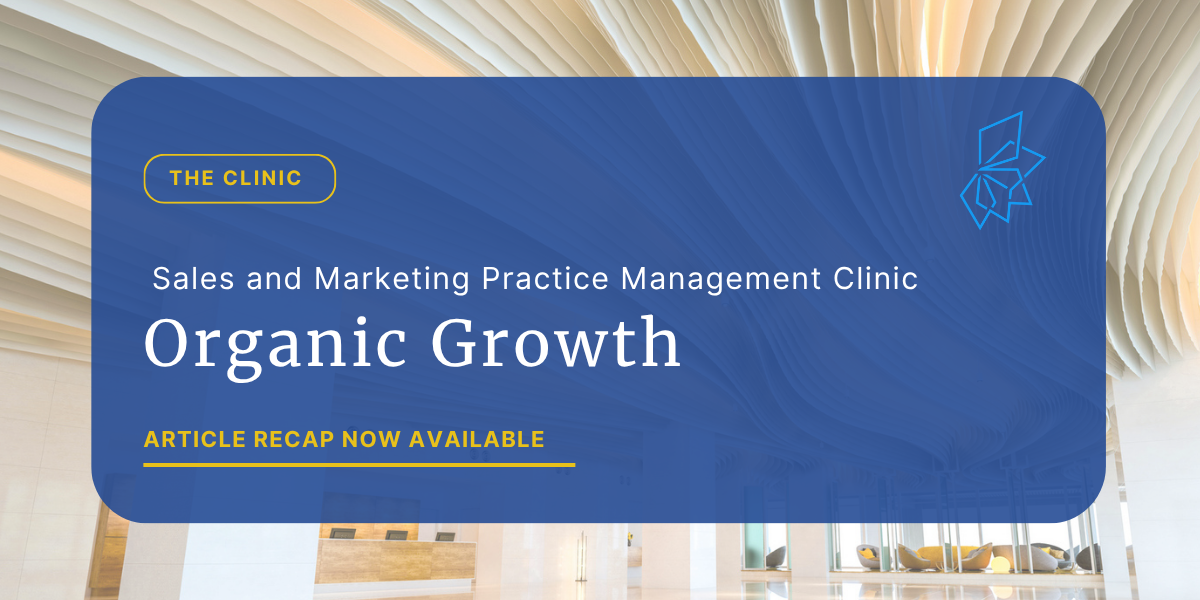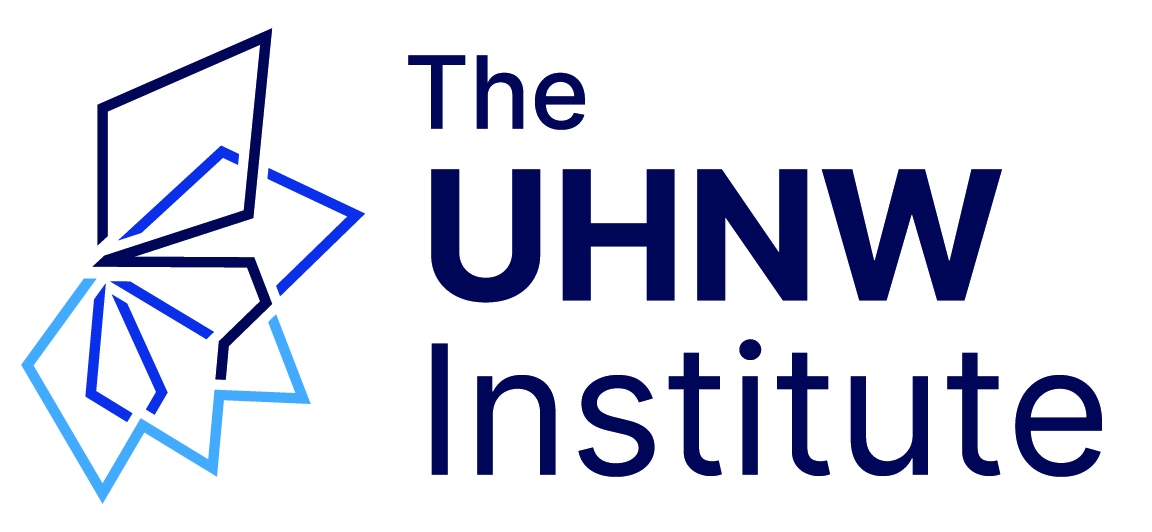
May 2025 Practice Management Clinic
UHNW Institute
June 10, 2025
Overview
The May 2025 Practice Management Clinic focused on organic growth strategies for wealth management firms serving ultra-high net worth families. Participants from various firms shared insights into their approaches to business development, challenges in client acquisition, and strategies for differentiation in a competitive market. The session was facilitated by Brian Hughes, President, Eton Advisors, and panelists included:
- Andrew Douglass, Head of Growth, AlTi Tiedemann Global
- Katie Pool, Principal, Mill Creek Capital Advisors
- Eddie Brown, Chief Growth Officer, Pathstone
Organic Growth Strategies in the UHNW Space
The Practice Management Clinic explored how leading firms in the ultra-high net worth (UHNW) space are approaching organic growth. Rather than relying solely on traditional business development, participants shared sophisticated, intentional strategies aimed at achieving sustainable annual growth rates of 7–10%.
A central theme emerged: successful organic growth in this market is not simply about acquiring assets—it’s about building the right infrastructure, targeting the right client segments, and cultivating deep relationships that drive long-term value.
Firms are increasingly focusing on market segmentation, identifying underserved or high-potential niches such as:
- Multigenerational family wealth
- Foundations and endowments
- Single- and multi-family offices
- Emerging groups like women managing wealth
This strategic focus allows them to offer tailored value propositions and build a reputation of specialized excellence.
Diversification of lead sources also stood out as a best practice. Most firms report that:
- 40% of new business comes from existing client relationships
- 40% comes through Centers of Influence (COI) networks
- The remaining growth is generated via personal networks and targeted outreach
Importantly, organic growth is being approached holistically—with the entire firm engaged in the effort. From dedicated growth teams to advisor incentives and cultural alignment, participants stressed the importance of embedding growth into the fabric of the organization.
Key Takeaways
- Segment your market strategically: focus on defined UHNW niches to develop specialized expertise and deliver unique value.
- Build an integrated growth culture: make growth a firm-wide initiative involving cross-functional collaboration and cultural alignment.
- Maximize current relationships: drive new opportunities from existing clients and COIs through structured engagement strategies.
- Invest in people and processes: support growth with dedicated teams, advisor training, and scalable infrastructure.
The group made clear that organic growth in the UHNW space is a deliberate, multidimensional effort. It requires more than referrals or cold outreach—it demands strategic segmentation, firm-wide alignment, and a long-term commitment to delivering differentiated value. Firms that invest in the right people, processes, and positioning are the ones best equipped to meet and exceed growth targets in this increasingly complex market.
Prospect Conversion Strategies in the UHNW Market
The Practice Management Clinic took an unvarnished look at one of the most persistent challenges in the UHNW advisory space: converting prospects into clients. In a market where many firms appear to offer similar services, participants acknowledged how difficult it can be to differentiate—often finding that client decisions come down to personal rapport and perceived fit.
The discussion revealed that prospect conversion in this space is more nuanced than traditional sales. Engaging with ultra-high net worth families—often across generations—requires a deliberate, long-term approach rooted in trust, collaboration, and highly tailored communication.
To meet this challenge, firms are refining their sales strategies to be more professional, intentional, and team-based. This includes:
- Incorporating senior leadership into prospect meetings
- Preparing with precision
- Debriefing before and after each interaction to continuously refine their approach
Skill development emerged as another key theme. Some firms have adopted regular articulation or role-play sessions, where teams practice presenting their value proposition, receive peer feedback, and hone their storytelling skills. The goal is not just to sell, but to convey differentiated value in a way that resonates personally with the client.
Key Takeaways
- Professionalize the Sales Approach: Use a structured, team-driven process that includes deep preparation, coordinated presentations, and consistent follow-through.
- Invest in Skills Training: Develop storytelling and communication capabilities through regular practice sessions and feedback loops.
- Take a Team-Based Engagement Approach: Involve senior leadership and subject matter experts to bring credibility and depth to prospect interactions.
- Prioritize Relationship Building: Focus on understanding and connecting with prospects on a human level, recognizing that trust and alignment drive conversion.
The discussion made it clear that successful prospect conversion in the UHNW space is less about traditional selling and more about relationship cultivation. Firms that emphasize collaboration, intentional preparation, and communication excellence are better positioned to stand out in a crowded market. In this environment, the ability to authentically demonstrate expertise, trustworthiness, and alignment with a client’s values can be the decisive factor in winning new business.
Brand Awareness and Digital Strategy in a Competitive Landscape
While not the primary focus of the Practice Management Clinic, the session’s discussion around brand awareness and digital strategy revealed an important—and rapidly evolving—frontier in UHNW client engagement. In an environment dominated by legacy institutions, independent firms face increasing pressure to differentiate themselves, especially among next-generation clients who are turning to digital platforms and AI tools to evaluate potential advisors.
Participants emphasized that a firm’s digital presence is now central to discovery and credibility. As a result, wealth management firms are investing in strategies that enhance online visibility, convey a compelling brand narrative, and leverage emerging technologies to connect with future clients.
Key Takeaways
- Prioritize Digital Discoverability: Ensure your firm is easily found through SEO, social media, and even AI tools like ChatGPT.
- Craft a Unique Brand Narrative: Clearly articulate what sets your firm apart from larger, name-brand institutions.
- Adopt Emerging Technologies: Embrace tools and platforms that meet next-gen clients where they are—online.
- Invest in Holistic Brand Strategy: Go beyond traditional marketing with thoughtful integration of brand, culture, and communication.
The clinic underscored a pivotal shift in client acquisition: reputation is now built as much online as it is in person. Firms that ignore digital strategy risk invisibility to the very clients they hope to attract. Importantly, participants noted a broader industry challenge—the need for category-level advocacy to elevate the profile of independent wealth management firms collectively. As the marketplace continues to evolve, success will depend on a firm’s ability to not only serve UHNW clients well, but also to be found, understood, and remembered.
Talent and Capacity Management
The clinic identified talent and capacity management as a central strategic challenge for wealth management firms. Participants discussed the increasing difficulty of attracting, developing, and retaining top talent in a competitive and evolving environment. Traditional advisor development models are being reimagined, with firms exploring more flexible structures and dynamic approaches to team building.
A generational shift is also reshaping expectations, requiring clearer career paths, better-defined roles, and more intentional succession planning. Firms are balancing the need to preserve institutional knowledge with a push for innovation and growth.
Key strategies included:
- Separating service and sales roles
- Developing dedicated growth teams
- Implementing firm-wide capacity planning
Participants emphasized that talent is not just a staffing concern—it’s a core driver of growth and differentiation.
Key Takeaways
- Reimagine Organizational Structure: Create flexible roles that separate service, sales, and growth functions.
- Invest in Talent Development: Build clear career pathways and succession plans while nurturing next-generation talent.
- Support Firm-Wide Growth: Design incentive structures that align team goals with business expansion.
- Plan for Capacity: Evaluate team capabilities and ensure bandwidth aligns with growth goals and client service needs.
The conversation underscored that successful firms view talent strategy as a business imperative—integrating development, culture, and capacity planning into the foundation of their growth models.
Lessons Learned and The Path Forward
May’s growth-focused Practice Management Clinic reinforced the need for wealth management firms to pursue intentional, firm-wide growth strategies that align with the complexity and expectations of UHNW clients. From segmentation and prospect conversion to digital presence and talent development, the insights shared emphasized that sustainable growth is the result of strategic focus, cultural alignment, and long-term investment in people and processes. As competition intensifies and client needs evolve, the firms best positioned for success will be those that build with purpose—and adapt with precision.

